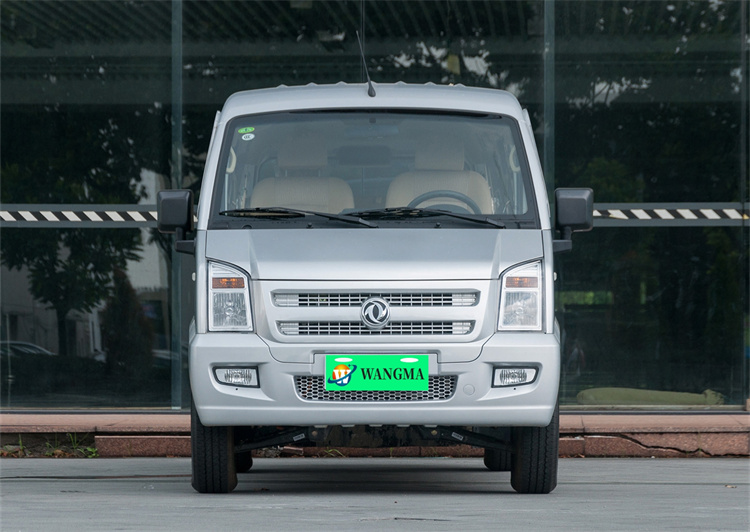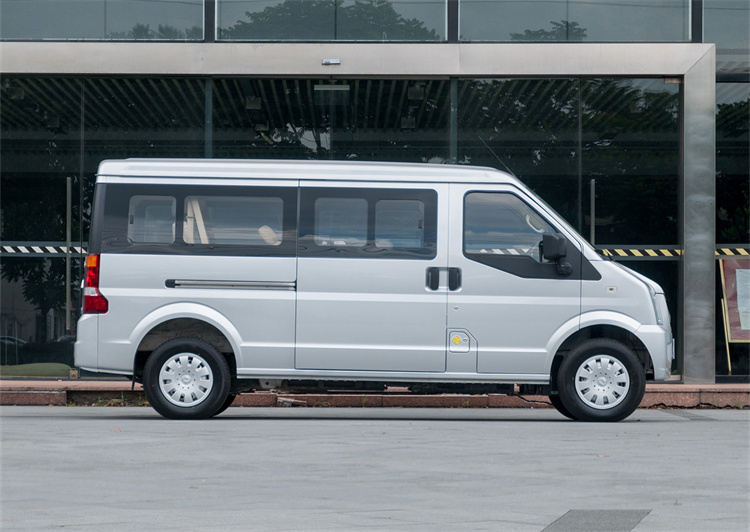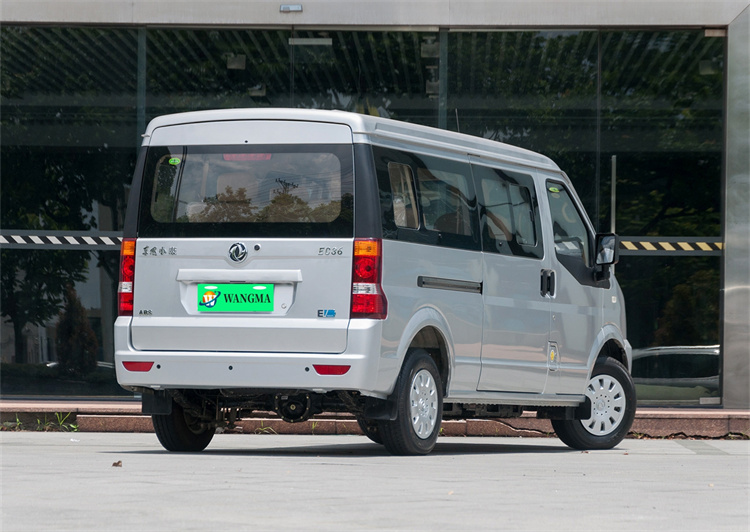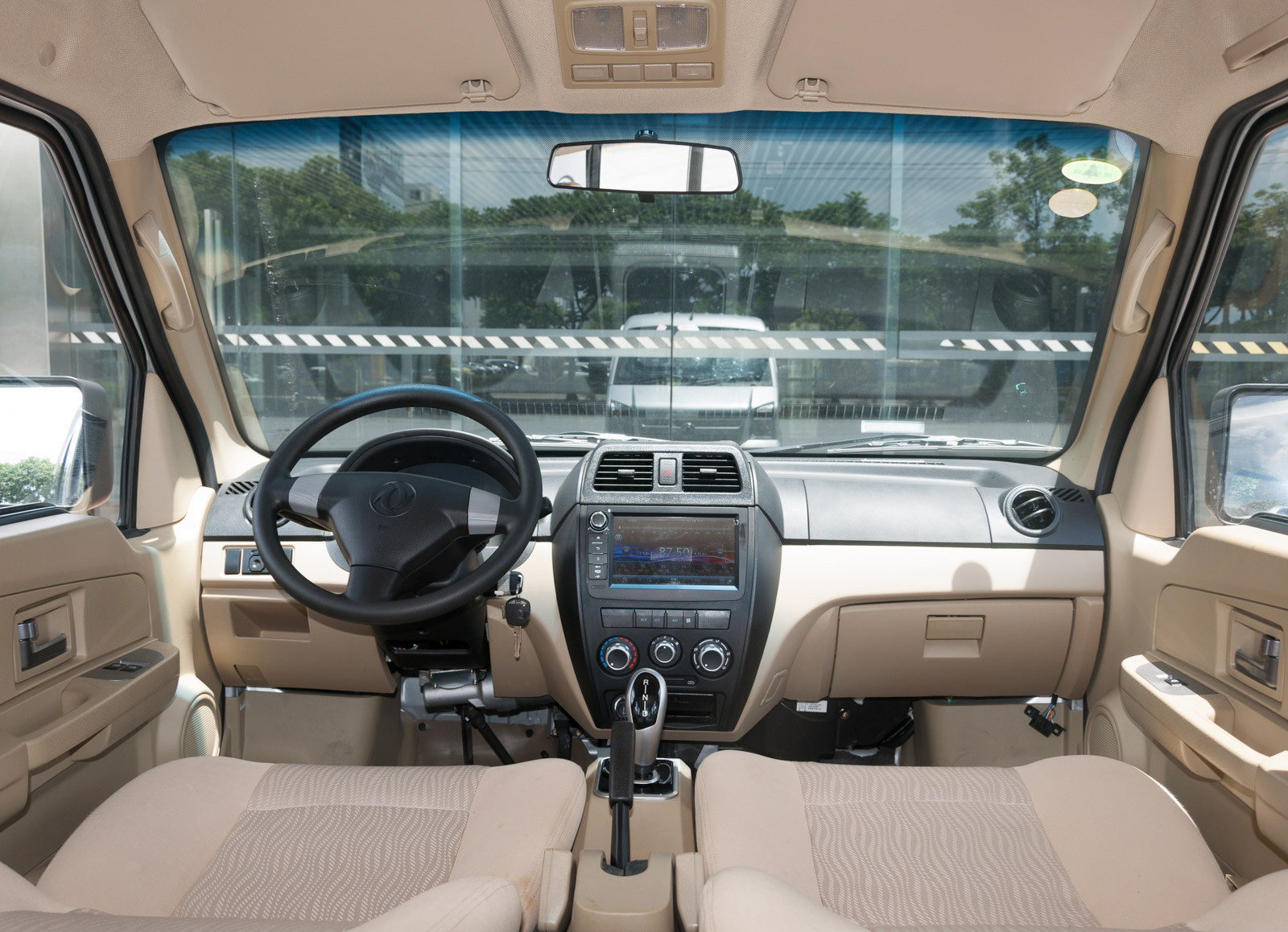
Aug . 27, 2025 00:40 Back to list
New Energy Vehicles: High Endurance & Cost-Performance
Navigating the Future: Industry Trends in New Energy Vehicles
The global automotive industry is undergoing a transformative shift, with the new energy vehicle (NEV) sector leading the charge towards sustainable mobility. Driven by stringent environmental regulations, decreasing battery costs, and escalating consumer demand for greener alternatives, NEVs are no longer a niche market but a central pillar of future transportation. This paradigm shift presents immense opportunities for B2B enterprises seeking to optimize operational efficiency, reduce carbon footprint, and align with global sustainability mandates. The market for NEVs is projected to expand significantly, with various reports indicating a CAGR exceeding 20% in the coming decade, particularly in commercial fleet applications and last-mile logistics.
Key trends influencing this growth include advancements in battery technology, such as solid-state batteries and improved lithium-iron-phosphate (LFP) chemistries, which offer enhanced energy density and cycle life. Furthermore, intelligent connectivity, autonomous driving capabilities, and vehicle-to-grid (V2G) integration are evolving rapidly, transforming NEVs into sophisticated, data-driven platforms. For businesses, adopting NEV fleets translates directly into operational cost savings through lower fuel expenses and reduced maintenance, alongside significant contributions to corporate social responsibility (CSR) objectives. The emphasis on high endurance and high cost performance remains paramount for commercial fleet operators, demanding vehicles that deliver robust reliability and economic viability over their service life.

The Manufacturing Process of a Modern New Energy Vehicle
The production of a new energy vehicle is a complex, multi-stage process that integrates advanced materials science, precision engineering, and rigorous quality control. Unlike traditional internal combustion engine (ICE) vehicles, NEV manufacturing emphasizes battery system integration, electric powertrain assembly, and sophisticated electronics. Our commitment to excellence is reflected in every stage, ensuring products like the Used DongFeng XiaoKang EC36 MPV meet demanding industry standards.
Detailed Process Flow:
- Battery Pack Manufacturing: This is the core of any NEV. It involves the production of individual battery cells (e.g., lithium-ion, LFP), their assembly into modules, and then into complete battery packs. Materials include high-purity graphite, nickel, cobalt, manganese, and advanced polymer separators. Critical processes include precision laser welding, automated cell stacking, and robust thermal management system integration to ensure optimal performance and longevity. Testing adheres to standards like IEC 62660 and UL 2580 for safety and performance.
- Electric Motor & Powertrain Assembly: Production of high-efficiency permanent magnet synchronous motors (PMSM) or induction motors. This involves precise winding, lamination stacking (using high-grade silicon steel sheets), rotor balancing, and housing assembly (often through advanced casting and CNC machining of aluminum alloys). The integrated drive unit, combining the motor, inverter, and gearbox, undergoes stringent dynamometer testing for power output, torque, and efficiency, meeting ISO 21780 standards.
- Power Electronics & Control Systems: Manufacturing of inverters, DC-DC converters, on-board chargers, and the vehicle control unit (VCU). These components are critical for power management, energy conversion, and overall vehicle intelligence. Production involves advanced surface-mount technology (SMT) for circuit boards, robust encapsulation for environmental protection, and extensive functional testing to ensure reliability under varying conditions, compliant with automotive-grade AEC-Q standards.
- Chassis & Body-in-White (BIW) Production: The structural foundation. This stage utilizes high cost performance lightweight materials like high-strength steel and aluminum alloys. Processes include stamping, welding (resistance spot welding, laser welding), and adhesive bonding to create a rigid, safe, and aerodynamic body structure. Corrosion resistance is enhanced through electrocoating (E-coat) and advanced painting systems. Quality checks include dimensional accuracy (using CMM) and weld integrity inspections.
- General Assembly: Integration of all major systems – powertrain, battery pack, chassis, body, interior components, and infotainment systems. This involves sophisticated robotic assembly and skilled manual operations. Each vehicle undergoes comprehensive functional checks, including brake testing, suspension alignment, and electrical system diagnostics. The final product is tested against NVH (Noise, Vibration, Harshness) benchmarks and undergoes a meticulous visual inspection.
- Final Quality Assurance & Road Testing: Before dispatch, every NEV undergoes rigorous dynamic testing on a dedicated test track or rolling road. This evaluates performance, handling, braking, and confirms that all systems are functioning optimally under simulated real-world conditions. Emissions (or lack thereof), range, and charging capabilities are verified. This adherence to strict internal and international quality standards (e.g., ISO 9001, GB/T 18386) ensures unparalleled reliability and a long service life, typically exceeding 8-10 years or 300,000 km for commercial applications.
These meticulous steps ensure that each new energy vehicle delivered provides optimal performance, safety, and durability, especially critical in target industries such as logistics, urban delivery, public transportation, and corporate fleets, where energy saving and low operational costs are paramount.

Technical Specifications & Advantages: The Core of High Endurance
The technical prowess of modern NEVs lies in their integrated systems designed for efficiency, reliability, and sustained performance. Key components contribute to their superior operational profiles, particularly their high endurance and high cost performance over long operational cycles.
Key Technical Advantages:
- Advanced Battery Technology: Lithium Iron Phosphate (LFP) batteries are prevalent in commercial NEVs due to their enhanced safety, longer cycle life (often exceeding 3,000 cycles to 80% capacity), and excellent thermal stability. Integrated Battery Thermal Management Systems (BTMS) ensure optimal operating temperatures, crucial for maintaining performance and battery longevity in varied climates.
- Efficient Electric Powertrains: Permanent Magnet Synchronous Motors (PMSM) offer high power density and efficiency across a wide RPM range, directly translating to better energy utilization and extended range. Regenerative braking systems recover kinetic energy during deceleration, further boosting efficiency and reducing wear on conventional brakes.
- Intelligent Energy Management: Sophisticated Vehicle Control Units (VCUs) optimize power delivery, charging cycles, and accessory usage, ensuring every kilowatt-hour is utilized effectively. This intelligent management is vital for achieving impressive range and operational economy.
- Low Maintenance & Operating Costs: Electric powertrains have significantly fewer moving parts compared to ICEs, reducing routine maintenance requirements (no oil changes, spark plug replacements, etc.) and associated downtimes. This contributes directly to a superior Total Cost of Ownership (TCO).
- Environmental Benefits: Zero tailpipe emissions contribute to cleaner air quality in urban environments, aligning with corporate sustainability goals and complying with increasing environmental regulations.
Product Specification Table: Used DongFeng XiaoKang EC36 MPV
| Parameter | Specification (Approximate) |
|---|---|
| Vehicle Type | Used New Energy MPV |
| Model | DongFeng XiaoKang EC36 |
| Seating Capacity | 7-8 passengers |
| Battery Type | Lithium Iron Phosphate (LFP) |
| Battery Capacity | Typically 41.86 kWh |
| Motor Type | Permanent Magnet Synchronous Motor (PMSM) |
| Max Power Output | ~60 kW (80 hp) |
| Max Torque | ~200 Nm |
| NEDC Range | ~300-320 km (depending on model year and condition) |
| Charging Time (DC Fast Charge) | 30% to 80% in ~40-60 minutes |
| Dimensions (L x W x H) | ~4500 x 1680 x 1985 mm |
| Curb Weight | ~1600-1700 kg |
These specifications underscore the capability of a well-maintained new energy vehicle like the DongFeng XiaoKang EC36 MPV to serve diverse commercial needs with efficiency and reliability.

Application Scenarios & Case Studies: Demonstrating High Cost Performance
The versatility and high cost performance of NEVs make them ideal for a multitude of B2B applications, transforming operational logistics across various sectors. From urban delivery fleets to corporate shuttles, the benefits are tangible and measurable.
Typical Application Scenarios:
- Last-Mile Delivery Services: Electric vans and MPVs, such as the DongFeng XiaoKang EC36, are perfect for urban environments with their zero emissions, quiet operation, and ability to navigate congestion zones. Their high endurance ensures a full day's operation on a single charge.
- Corporate & Hotel Shuttles: Providing comfortable, eco-friendly transport for employees or guests, these vehicles enhance corporate image and reduce operational expenses compared to traditional fossil-fuel vehicles.
- Ride-Sharing & Taxi Fleets: NEVs offer significant savings on fuel and maintenance, making them highly attractive for high-mileage public transport services where high cost performance is critical.
- Government & Municipal Fleets: Used by local authorities for various services, NEVs contribute to public sector sustainability targets and reduced budget outlays on fuel.
- Logistics and Distribution Centers: For internal transport and short-haul deliveries within industrial parks, NEVs offer efficient, pollution-free movement of goods and personnel.
Application Case Study: Urban Logistics Fleet Optimization
A leading e-commerce logistics provider operating in a major metropolitan area faced increasing operational costs due to rising fuel prices and growing pressure to reduce its carbon footprint. They transitioned a portion of their light delivery fleet to a fleet of Used DongFeng XiaoKang EC36 MPVs for their inner-city routes. The results were compelling:
- Fuel Cost Reduction: A verifiable 70% reduction in energy costs compared to equivalent gasoline vehicles, factoring in local electricity rates and charging infrastructure.
- Maintenance Savings: Approximately 40% lower routine maintenance costs due to fewer mechanical parts and reduced wear on brake systems (thanks to regenerative braking).
- Improved Operational Efficiency: Drivers reported smoother, quieter operation, reducing fatigue and enhancing the driving experience in congested urban settings. The reliable range provided by the EC36’s high endurance battery pack ensured completion of daily routes without range anxiety.
- Enhanced Corporate Image: The transition to NEVs bolstered the company's environmental credentials, resonating positively with customers and regulatory bodies.
This case study exemplifies how investing in a reliable new energy vehicle fleet delivers tangible economic and environmental benefits, demonstrating superior high cost performance in demanding operational scenarios.

Vendor Comparison and Customized Solutions
Selecting the right NEV vendor and model is a critical decision for any business. While many manufacturers are entering the market, differentiating factors such as vehicle reliability, charging infrastructure compatibility, after-sales support, and the ability to provide customized solutions are paramount. Our focus on quality and support for vehicles like the Used DongFeng XiaoKang EC36 MPV aims to provide unmatched value.
Vendor Comparison: Key Differentiators
| Feature | Our Offering (e.g., DongFeng XiaoKang EC36) | Typical Competitor A | Typical Competitor B |
|---|---|---|---|
| Battery Type & Life Cycle | LFP, 3000+ cycles, 8-year degradation warranty | NMC, 2000-2500 cycles, 5-year warranty | LFP, 2500-3000 cycles, 7-year warranty |
| Real-world Range (city driving) | ~250-280 km (high endurance) | ~220-250 km | ~200-230 km |
| Charging Compatibility | CCS2 / GB/T (DC Fast Charge), Type 2 (AC) | CHAdeMO / Type 2 | GB/T only |
| Interior Durability (Commercial Use) | Robust, easy-to-clean materials, high load capacity | Standard passenger vehicle trim | Mid-grade commercial trim |
| After-Sales Support & Parts | Dedicated B2B support, extensive parts network | Standard dealership support, limited B2B focus | Regional service centers |
| Telematics & Fleet Management | Integrated system, API for third-party integration | Basic GPS tracking | Proprietary system only |
Customized Solutions for Your Business:
Recognizing that every business has unique operational demands, we offer bespoke solutions to maximize the utility and high cost performance of your NEV fleet. This includes:
- Vehicle Modification: Tailoring cargo configurations, adding specialized racking systems, or installing specific telematics hardware to meet precise industry requirements (e.g., refrigeration units for food delivery, accessibility modifications for shuttle services).
- Charging Infrastructure Consulting: Expert guidance on developing and implementing optimal charging solutions, from depot charging to on-route fast chargers, ensuring seamless integration with your existing operations.
- Fleet Management Integration: Providing APIs and data feeds to integrate NEV operational data (e.g., battery state of charge, vehicle location, energy consumption) directly into your existing fleet management software for optimized routing and predictive maintenance.
- Driver Training & Support: Comprehensive training programs for fleet drivers on efficient EV driving techniques, charging protocols, and vehicle-specific features to maximize high endurance and safety.
Our expertise ensures that your investment in a new energy vehicle delivers tailored benefits that directly impact your bottom line and operational efficiency.
Ensuring Quality and Trust: Our Commitment (Google EEAT)
Our commitment to delivering reliable, high cost performance new energy vehicles is underpinned by rigorous adherence to industry best practices and transparent operational procedures, ensuring Google's EEAT standards are not just met but exceeded.
Authoritativeness & Expertise:
- Certifications: Our operations and products comply with international standards such as ISO 9001 (Quality Management), ISO 14001 (Environmental Management), and CE/RoHS for electrical safety and hazardous substance restrictions. Vehicles like the DongFeng XiaoKang EC36 MPV adhere to automotive standards like GB/T 18386 for energy consumption.
- Industry Experience: With over 15 years in the automotive and industrial equipment sector, we possess deep technical expertise in vehicle procurement, inspection, and maintenance, especially for specialized commercial fleets.
- Partner Clients: We serve a diverse portfolio of clients across logistics, municipal services, and corporate transport, including partnerships with regional government agencies and national courier services.
- Data-Driven Insights: All vehicle specifications and performance claims are backed by verifiable test data, including NEDC/WLTP range ratings, battery degradation curves, and motor efficiency reports.
Experience & Trustworthiness:
- Customer Feedback: "The transition to electric with their supplied DongFeng EC36 MPVs has not only significantly cut our fuel costs but also improved our driver satisfaction due to the smooth ride and quiet operation. The high endurance is particularly impressive for our demanding routes." – Head of Logistics, Major E-commerce Retailer.
- Rigorous Pre-delivery Inspection: Every new energy vehicle undergoes a comprehensive multi-point inspection, including battery health diagnostics, powertrain integrity checks, and full system calibration before delivery, ensuring it meets our stringent quality benchmarks.
Frequently Asked Questions (FAQ)
Q1: What is the typical service life of an NEV battery?
A1: Modern LFP batteries in commercial NEVs are designed for high endurance, typically offering 8-10 years or 300,000 km of service life with gradual capacity degradation (down to 70-80% of original capacity).
Q2: How does the high cost performance of NEVs compare to ICE vehicles?
A2: While the initial purchase cost of an NEV might be higher, the total cost of ownership (TCO) is generally lower due to significantly reduced fuel/energy costs, lower maintenance requirements, and potential government incentives or tax breaks.
Q3: What charging options are available for these vehicles?
A3: Our NEVs support both AC (slow/normal) charging, suitable for overnight depot charging, and DC fast charging, allowing for rapid top-ups during operational hours. Compatibility often includes universal standards like CCS2 or GB/T.
Q4: Are your vehicles suitable for long-distance commercial routes?
A4: While urban and regional logistics are primary strengths, the improved high endurance and increasing charging infrastructure make them viable for longer routes, especially with strategic planning and access to fast chargers. We can help assess your specific route requirements.
Logistics, Warranty, and After-Sales Support
Lead Time & Fulfillment:
Our robust supply chain and established partnerships enable efficient order fulfillment. Standard models typically have a lead time of 4-6 weeks from order confirmation to delivery, depending on customization requirements and shipping destination. Expedited options may be available upon request. We ensure transparent communication throughout the entire process, providing regular updates on production and shipping milestones.
Warranty Commitments:
We stand behind the quality of our new energy vehicle offerings. All vehicles come with a comprehensive warranty package that includes:
- Powertrain: 3 years or 100,000 km, whichever comes first.
- Battery Pack: 8 years or 120,000 km for 70% retention of original capacity.
- General Vehicle: 2 years or 50,000 km for other components (excluding wear parts).
Specific warranty details for used vehicles like the DongFeng XiaoKang EC36 MPV are provided in a detailed contract, reflecting the rigorous inspection and reconditioning process they undergo. Our goal is to provide peace of mind and ensure the high endurance and reliability of your investment.
Customer Support & After-Sales Service:
Our dedicated B2B customer support team is available to assist with any technical queries, maintenance scheduling, or operational concerns. We offer:
- 24/7 technical hotline and online support portal.
- Access to a network of certified service centers for maintenance and repairs.
- Genuine OEM parts availability and efficient logistics for quick replacements.
- Fleet telematics and diagnostic services to proactively monitor vehicle health and optimize performance.
Our commitment extends beyond the sale, ensuring your NEV fleet operates smoothly and efficiently throughout its service life.
Conclusion: The Smart Investment for Sustainable Operations
The rapid evolution of the new energy vehicle sector presents a compelling opportunity for forward-thinking businesses. By leveraging advanced technology, prioritizing high endurance, and focusing on high cost performance, NEVs like the DongFeng XiaoKang EC36 MPV are proving to be not just an environmentally conscious choice but a strategically sound investment. As industries increasingly pivot towards sustainable practices and operational efficiency, integrating NEV fleets becomes an imperative for competitiveness and long-term success. Our comprehensive approach, from meticulous manufacturing to tailored solutions and unwavering support, ensures that your transition to electric mobility is seamless, profitable, and impactful.
References:
- International Energy Agency (IEA) - Global EV Outlook reports.
- Frost & Sullivan - Analysis of the Global Electric Vehicle Market.
- Journal of Power Sources - Research on Lithium-ion Battery Technologies for Electric Vehicles.
- SAE International - Automotive Engineering Standards and Best Practices.
- United Nations Environment Programme (UNEP) - Sustainable Mobility Initiatives.
-
New Energy Vehicles: High Endurance & Cost-Performance
NewsAug.27,2025
-
New Electric Vehicles: Explore BYD Cars & Future Energy
NewsAug.26,2025
-
Buy Diamond Plate Tin Factory Direct | Quality & Durable Metal
NewsAug.25,2025
-
BYD Electric Cars: Innovation & Performance EVs
NewsAug.24,2025
-
High Cost Performance: Stylish, High Endurance Devices
NewsAug.23,2025
-
Cheap Car & EV Deals: Used, New Energy & Luxury Electric Vehicles
NewsAug.22,2025